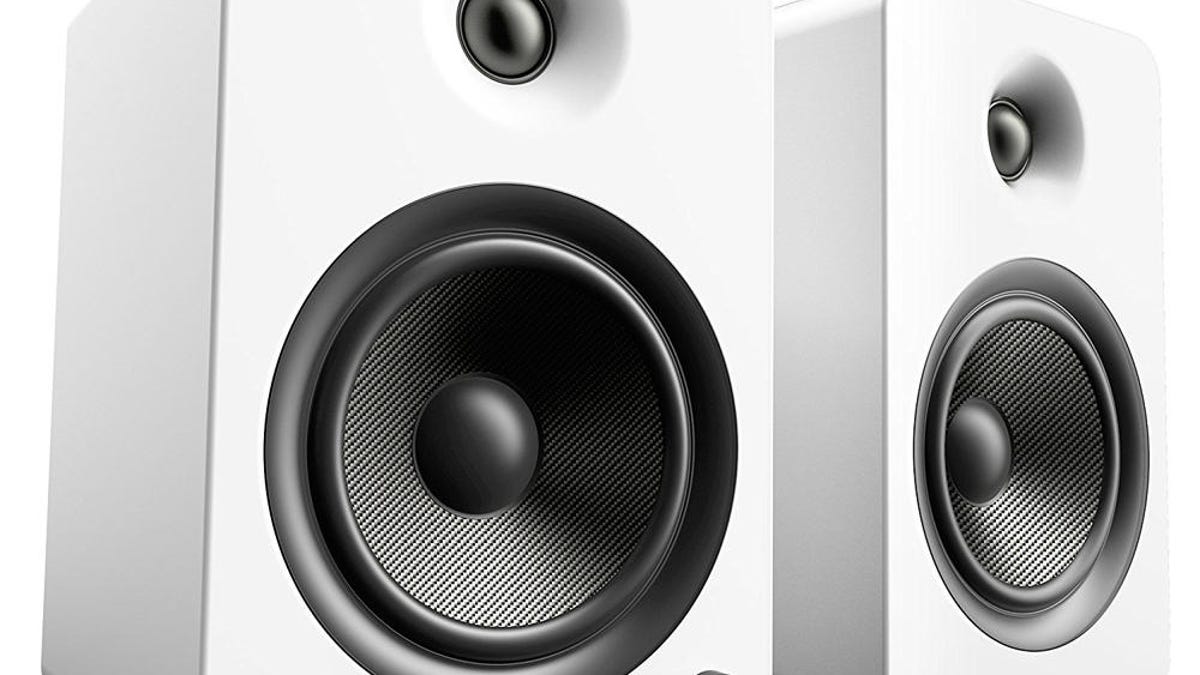 Why You Can Trust CNET
Why You Can Trust CNET These stereo Bluetooth speakers beat Apple HomePod and Google Home Max
If you care about the sound of your music or movies, the Kanto YU6 is a good reason not to buy a sound bar or smart speaker.
Pretty much everybody else is now happy with a single Bluetooth or sound bar speaker, but stereo speakers are still the choice for audiophiles.
I get it: One speaker takes up half the space of two and costs roughly half as much, but I'd be derelict in my duties if I failed to mention what's lost with a single speaker. Stereo, for starters. The room-filling spaciousness and openness you only get with two speakers like these Kanto YU6 Bluetooth speakers, which are only sold in pairs.
If you care about sound quality, the YU6 speakers have it all over the highly touted Google Home Max ($399, £399 or AU$599 per speaker) or the Apple Home Pod ($349, £319 or AU$499 per speaker). They may be "smart" speakers you can talk to, but they sound dynamically constricted and smaller than the YU6 speakers that list for $390 (£349) a pair. Those prices convert to roughly AU$625 per pair.
Smart speakers and sound bars can't touch the YU6's physical connectivity suite, it's above average for this type of speaker. The YU6 boasts one set of stereo RCA analog inputs that can be switched over to moving-magnet phono inputs for you turntable fans, a 3.5mm stereo analog input, a RCA subwoofer output jack, and two optical digital audio inputs. The YU6 also features AptX Bluetooth wireless sound.
It's a two-way design with a 1-inch (28mm) silk dome tweeter and a 5.25-inch (132mm) Kevlar woofer, and the system is rated at 200 watts peak power for both channels. The rear panel also hosts a USB charging port, but no USB input, that might be a hint the YU6 isn't really intended for use as a computer speaker. In any case you need to run a speaker cable between the left and right YU6s, no grilles are included with the speakers.
My samples' rounded cabinets and satin-white finish looked slick, they are also available in gloss white, gloss black, gloss red, matte grey, matte black, and bamboo wood. Each YU6 measures 6.9 by 8.1 by 10.7 inches (17.5 by 20.5 by 27.2 cm). The speakers have bass ports on their rear panels.
I like that the remote has bass and treble, and left-right balance channel controls to fine tune the sound. But the volume ramp up and down is a little too fast, so it takes some getting used to before you arrive at the desired volume. Or you can adjust the volume with the knob on the left speaker for both channels.
Listening
The left and right Kanto YU6 speakers rear panels.
I first tried the YU6s on my desktop, and quickly noted they're not as crisp as my reference Adam Audio F5 speakers, but the YU6s' sound was still definitely enjoyable closeup in the nearfield (30 inches or 762mm) away from the listening position.
The YU6 speakers sounded better flanking my trusty old Panasonic TH-42PS9 plasma display. The YU6s makes me again question the market's move to mid-price sound bars, when you could have a pair of these terrific speakers for the same or less money.
My recommendation for the YU6 over comparably priced sound bars such as the Zvox SB5000 only grows stronger for buyers who listen to more music than watch movies with bombastic sound effects. Sound bars with subwoofers may deliver more bass boom than a pair of YU6s can muster on their own, but if you crave deep bass you can always add a Kanto or another brand's powered subwoofer. Then you'll get it all: Superior bass shaking power, and the YU6s' room-filling sound.
I streamed Snail Mail's debut indie rock album Lush from Tidal via Bluetooth. The album benefited from the YU6's assured sound presence: Lindsey Jordon's vocals were right there, smack dab between the two speakers.
That said my respect for the YU6s sonic stature grew when I stopped streaming and changed over to playing music and movies over my Oppo BDP-105 Blu-ray player. Discs sounded more alive and less cloudy, no surprise there, Bluetooth is hardly ideal as far as fidelity is concerned. If you want the YU6 to sound its best, use the RCA analog or optical digital inputs.
Also the $200 per pair Fluance Ai40 speakers (UK and Australia pricing unavailable) sound very decent for the money, these critters play loud with ease, produce deep, well-defined bass for such a small set of speakers. The YU6 is a better, more transparent-sounding speaker, and offers more connectivity options like turntable input and subwoofer output. Still for $200 the Ai40s are pretty sweet, I'll review them here in the near future.
The Kanto YU6 is a very likable speaker that's ideal for small to midsize rooms for enjoying music and movies, for a reasonable price.


